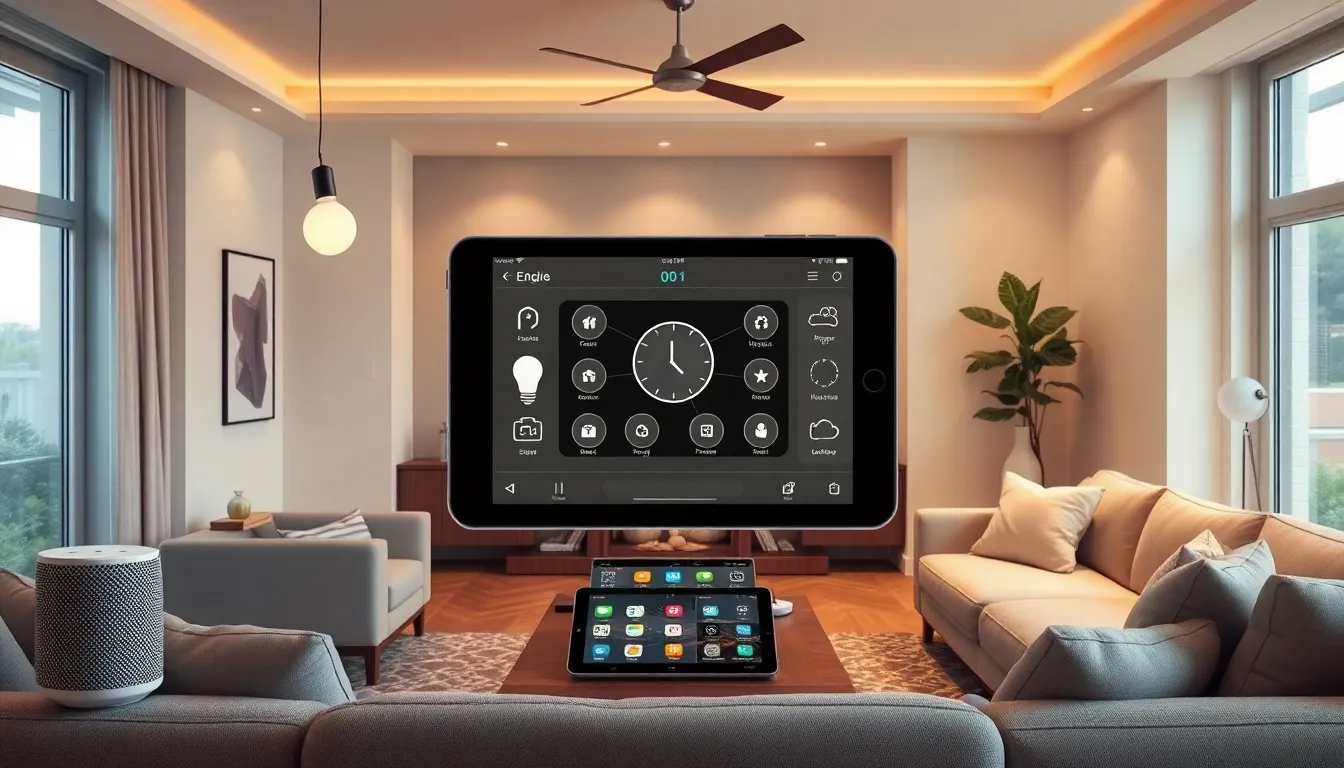Table of Contents
ToggleIn a world where your toaster can chat with your fridge, IoT integration services are the unsung heroes making it all happen. Imagine a life where your devices work together seamlessly, saving you time and energy while adding a sprinkle of magic to your daily routine. It’s not just a tech dream; it’s a reality that’s taking shape faster than you can say “smart home.”
Overview of IoT Integration Services
IoT integration services play a vital role in connecting various devices within a smart home ecosystem. They facilitate communication among gadgets, enabling seamless operations and improved user experience. These services assist in managing tasks through intuitive platforms that unify device control.
Cloud computing supports IoT integration by providing a scalable environment for data processing and storage. These services enable real-time analytics, supporting actions based on device interactions. Security measures ensure data sent between devices remains confidential and protected from unauthorized access.
Smart home manufacturers often collaborate with integration service providers to enhance product functionality. This collaboration enhances device compatibility, allowing even disparate brands to work together. With a robust IoT integration system in place, users can monitor energy consumption and adjust settings remotely, leading to significant cost savings.
For businesses, IoT integration opens new avenues for operational efficiency. It optimizes supply chains through tracking inventory levels and automates systems for greater productivity. Additionally, predictive maintenance becomes possible, reducing downtime by addressing issues before they escalate.
Integration services include customized solutions tailored to specific industry needs. These services streamline processes in various sectors like healthcare, agriculture, and transportation. Monitoring patient health or improving crop yields showcases the versatility of IoT integration across different domains.
Ultimately, these services drive the evolution of smart home technology and industrial applications. They transform everyday living into more efficient experiences, highlighting the increasing importance of IoT integration in modern society.
Key Components of IoT Integration

Key components underpin the effectiveness of IoT integration services. Focusing on device connectivity, data management, and security protocols ensures a cohesive smart home experience.
Device Connectivity
Device connectivity facilitates communication among various smart devices. It connects sensors, appliances, and applications to create an interactive ecosystem. Real-time data exchange enables automation, enhancing user convenience. Companies employ protocols like MQTT, CoAP, and HTTP to streamline communication. Robust platforms support diverse devices from multiple manufacturers, improving compatibility across brands. These aspects foster an integrated environment where devices operate seamlessly. Users enjoy the convenience of controlling devices from a unified application, making smart home management intuitive.
Data Management
Data management plays a critical role in IoT integration, delivering actionable insights. Organizations rely on cloud computing for processing large volumes of data generated by devices. Efficient data storage and analytics transform raw information into valuable intelligence. Businesses utilize real-time monitoring to enhance decision-making and optimize processes. Tools designed for data visualization simplify complexities, presenting information in user-friendly formats. Effective management also helps identify patterns and trends, promoting proactive maintenance and increased operational efficiency.
Security Protocols
Security protocols protect sensitive information within IoT ecosystems. Robust encryption methods safeguard data during transmission, shielding against unauthorized access. Manufacturers implement strict authentication measures to ensure devices communicate securely. Regular software updates mitigate vulnerabilities, keeping systems resilient against evolving threats. Best practices include network segmentation, limiting device access, and monitoring for unusual activity. Comprehensive security frameworks reinforce trust in IoT solutions, crucial for consumer confidence in smart home technologies.
Benefits of IoT Integration Services
IoT integration services offer numerous advantages that elevate both smart home environments and business operations.
Improved Efficiency
Efficient operations emerge when devices communicate seamlessly. Through IoT integration, homes and workplaces automate routine tasks, minimizing manual intervention. This automation leads to significant energy savings as devices optimize their usage based on real-time data. For instance, smart thermostats adjust heating and cooling based on occupancy, ensuring comfort while conserving energy. Businesses benefit from streamlined processes such as automated inventory management and supply chain optimization. Reduced downtime occurs when predictive maintenance identifies potential equipment failures before they escalate, enhancing overall efficiency.
Enhanced Decision Making
Data-driven insights play a vital role in optimizing performance. IoT integration consolidates data from various devices, providing a comprehensive view of operations. Organizations can analyze this data to make informed decisions quickly. For example, real-time analytics help businesses understand customer behaviors and preferences, enabling tailored marketing strategies. In smart homes, users can monitor energy use and adjust settings accordingly, promoting responsible consumption. Enhanced decision making arises from the combination of actionable insights and intuitive interfaces, empowering users to respond effectively to ever-changing conditions.
Challenges in Implementing IoT Integration
Implementing IoT integration presents various challenges that organizations must navigate effectively to ensure success.
Technical Hurdles
Technical hurdles arise frequently during IoT integration. Compatibility among devices from different manufacturers often leads to integration difficulties. Diverse communication protocols complicate seamless connections, resulting in inefficiencies. Developers frequently face challenges in ensuring that legacy systems work with newer devices and technologies. Additionally, scaling the infrastructure can become overwhelming as the number of connected devices increases. Complexity in data transfer and processing requires robust solutions that can handle real-time demands. Overall, addressing these technical challenges is crucial for creating a cohesive IoT environment.
Data Privacy Concerns
Data privacy concerns significantly impact IoT integration services. Organizations collect vast amounts of sensitive data, making them attractive targets for cyber threats. Protecting personal information remains a top priority for users and service providers alike. Implementing strict data governance policies and security measures helps mitigate risks associated with data breaches. Regulatory compliance, such as GDPR, adds another layer of complexity, requiring organizations to adopt best practices in data management. Ensuring transparency with users regarding data usage fosters trust and loyalty in smart device ecosystems.
The impact of IoT integration services on modern living is undeniable. As technology continues to evolve, the seamless connectivity of devices transforms homes and businesses alike. Enhanced efficiency and improved decision-making are just the beginning.
With the ability to monitor and control various systems in real-time, users can enjoy a more convenient and automated lifestyle. The collaboration between manufacturers and integration service providers ensures that compatibility and functionality remain at the forefront.
As organizations navigate the complexities of implementation, prioritizing security and data governance will be essential. Embracing IoT integration services not only leads to smarter living environments but also paves the way for a more connected future.




